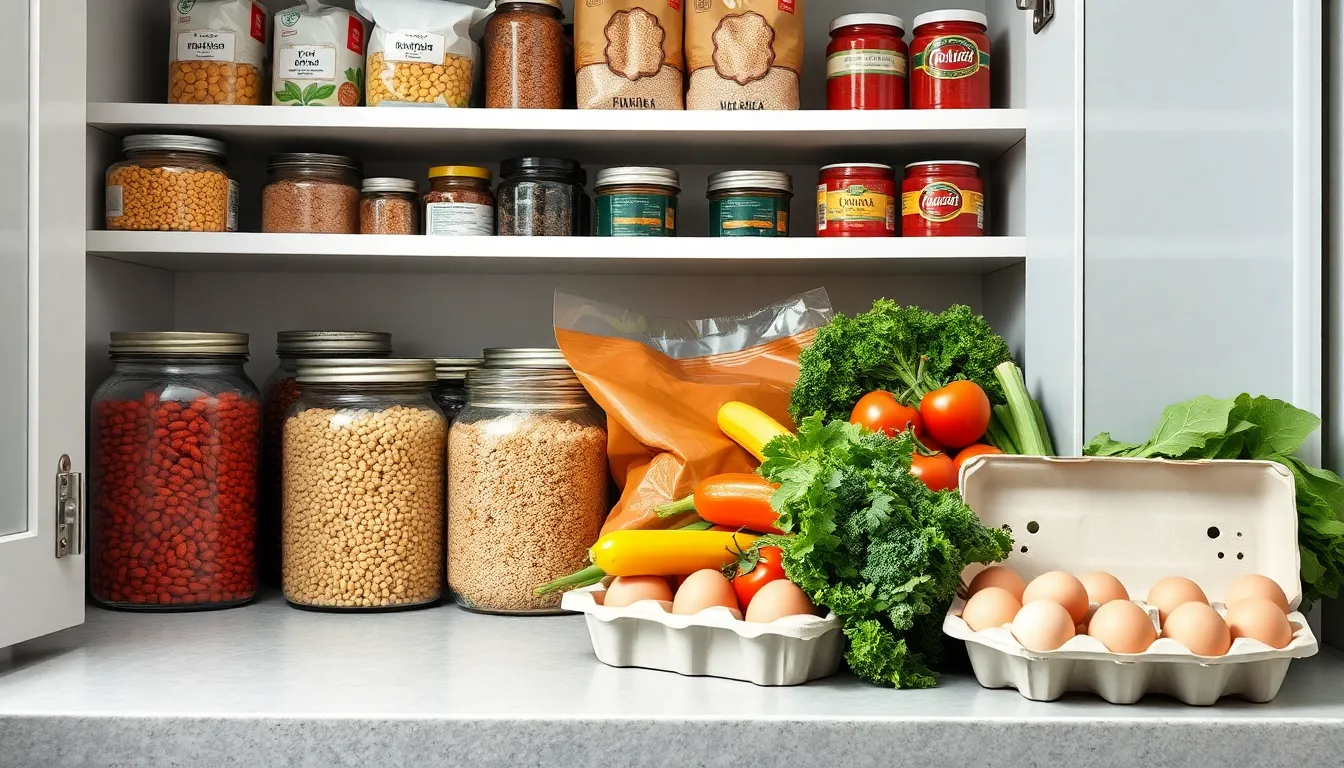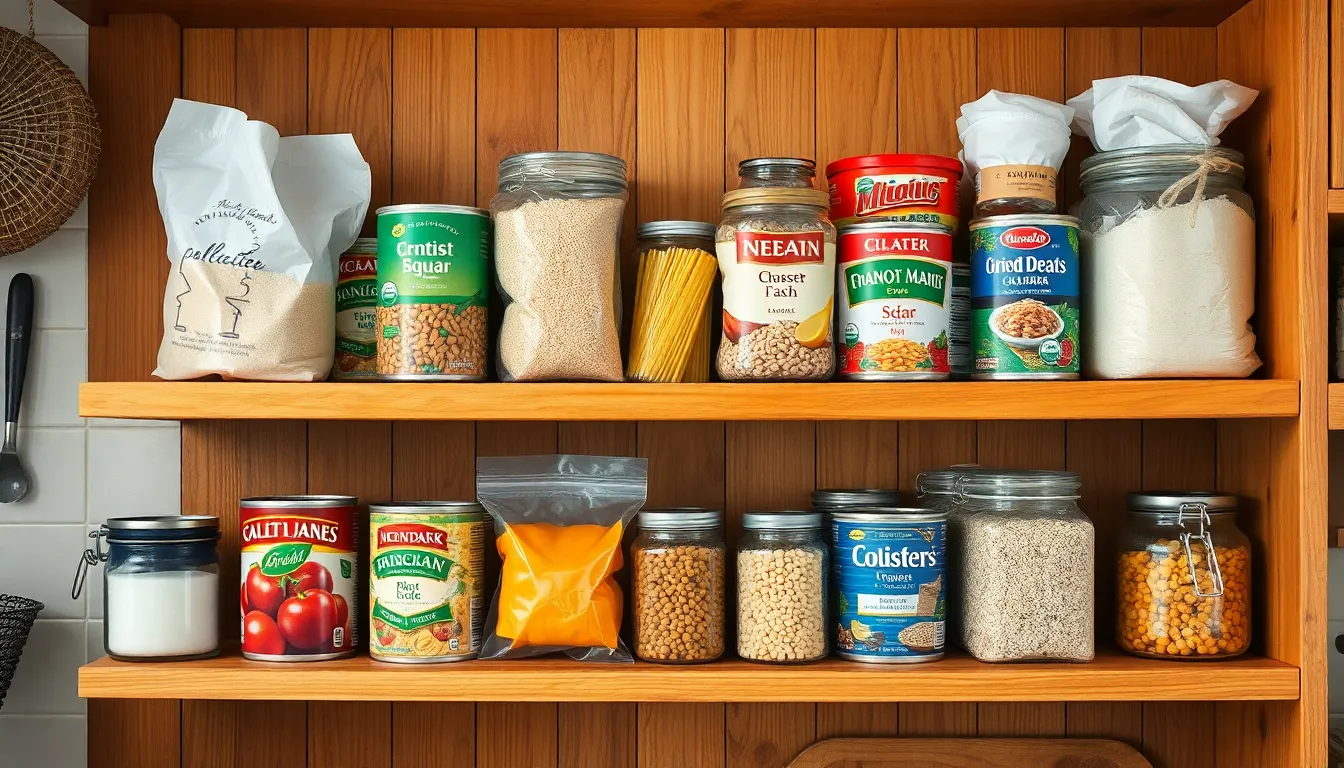In a world where grocery prices seem to rise faster than a soufflé, budget cooking hacks are the culinary superheroes everyone needs. Who says you can’t whip up delicious meals without emptying your wallet? With a pinch of creativity and a dash of resourcefulness, anyone can turn their kitchen into a budget-friendly haven.
Table of Contents
ToggleUnderstanding Budget Cooking Hacks
Budget cooking hacks simplify meal preparation while keeping costs low. These strategies focus on maximizing the value of ingredients, reducing waste, and enhancing flavors.
What Are Budget Cooking Hacks?
Budget cooking hacks encompass various techniques aimed at saving money in the kitchen. Examples include using leftovers creatively, repurposing ingredients, and making meals from scratch. Home cooks often explore bulk buying to take advantage of cost savings. Implementing these hacks transforms everyday ingredients into flavorful dishes. Simple adjustments, like using seasonal produce, make a significant impact on overall expenses.
Benefits of Budget Cooking Hacks
Budget cooking hacks offer numerous advantages to home cooks. First, they lower grocery bills, allowing families to cook nutritious meals affordably. Cooks save time by meal prepping, resulting in less time spent daily on cooking. Health benefits arise from preparing meals at home, where ingredient quality can be controlled. Another advantage includes minimizing food waste by ensuring all ingredients are utilized effectively. Creativity flourishes in the kitchen, encouraging experimentation and diverse culinary experiences.
Essential Ingredients for Budget Cooking


Stocking a kitchen with essential ingredients is crucial for budget cooking, as it allows for creativity and flexibility in meal preparation.
Pantry Staples to Stock Up On
Canned tomatoes serve as a versatile base for many dishes. Rice and pasta act as inexpensive fillers that can elevate meals. Dried beans offer protein-rich options and last long when stored properly. Flour and sugar are necessary for baking and thickening sauces. Spices and herbs enhance flavors and can transform basic dishes into culinary delights. Keep the pantry organized to quickly find these staples and make meal planning easier.
Affordable Proteins and Vegetables
Eggs provide a budget-friendly protein and can be prepared in various ways. Lentils are packed with nutrients and cook quickly, offering a great meat alternative. Frozen vegetables retain nutrients and are often more affordable, allowing for convenience and longer shelf life. Canned fish, such as tuna or sardines, are inexpensive sources of protein that add healthy fats. Choosing seasonal vegetables can lead to significant savings while guaranteeing freshness and flavor in meals.
Time-Saving Cooking Techniques
Time-saving techniques streamline meal preparation while ensuring budget efficiency. They enhance the cooking experience, creating more time for enjoyment rather than labor.
Meal Prepping Strategies
Meal prepping simplifies busy weeks. Start by planning meals for the week ahead and choosing recipes with overlapping ingredients. Cook large batches of grains or proteins on a day off, then portion them out for easy access. Store meals in clear containers to make healthy choices visible. By pre-chopping vegetables, one can significantly reduce cooking time during the week. Each strategy promotes efficiency and minimizes the need for last-minute takeout.
One-Pot and Sheet Pan Recipes
One-pot and sheet pan recipes maximize convenience. They require minimal cleanup, saving time after cooking. Combine proteins with vegetables and seasonings in a single dish, allowing them to cook together and blend flavors. Sheet pan meals harness oven heat for evenly cooked dishes that often only take about 30 minutes. Opting for these simple recipes reduces kitchen clutter while providing delicious, nutritious meals. These strategies highlight how easy meal preparation can be without sacrificing taste or budget.
Creative Recipe Ideas
Creative recipes help in making meals both enjoyable and affordable. Experimentation and resourcefulness lead to delicious results without a hefty price tag.
Budget-Friendly Breakfasts
Oatmeal stands out as a versatile and cheap breakfast option. Toppings like fruits, nuts, or yogurt add flavor and nutrition. Scrambled eggs provide a protein-packed alternative, especially when paired with leftover vegetables. Smoothies using frozen fruits and a base of yogurt or milk can be both satisfying and wholesome. Pancakes made from flour and basic ingredients, enhanced with seasonal fruits, create a delightful morning treat. Instant grits can also turn into a fulfilling breakfast with a simple addition of cheese or eggs.
Affordable Lunch and Dinner Options
Stir-fried rice uses leftover vegetables and proteins for a flavorful meal. Canned beans combined with rice create a hearty, nutritious dish, packed with protein and fiber. Vegetable soups made from broth, canned tomatoes, and seasonal veggies can make a satisfying dinner. Homemade pasta sauces using canned tomatoes and spices save both money and time. Tacos filled with beans, cheese, and fresh veggies provide a filling yet inexpensive meal. Sheet pan dinners using a protein source and assorted vegetables minimize prep and cleanup, offering easy, delicious meals on a budget.
Tips for Smart Grocery Shopping
Smart grocery shopping minimizes expenses while maximizing value. It emphasizes strategies to enhance budgeting capabilities and make shopping trips effective.
Meal Planning and Shopping Lists
Planning meals creates a focused approach to grocery shopping. Start by deciding on meals for the week, ensuring each meal is balanced and includes diverse ingredients. Creating a detailed shopping list based on those meals helps avoid impulse purchases. Include quantities needed to stick to recipes without overspending. Organizing the list by store layout streamlines the shopping process. Check pantry items before shopping to prevent duplicate purchases. Meal planning also allows for using ingredients efficiently, reducing waste and enhancing creativity in recipes.
Utilizing Sales and Coupons
Taking advantage of sales and coupons provides significant savings. Review weekly ads from local grocery stores to identify discounts on frequently purchased items. Pair coupons with store promotions to maximize savings on staple products. Consider loyalty cards some stores offer for additional discounts and rewards. Using apps that track price history can highlight which items typically go on sale. Stocking up on sale items improves cost efficiency, ensuring an ample supply for future meals. Being informed about store policies, such as price matching, further enhances shopping strategy.

